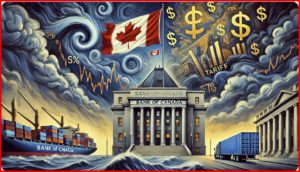
When you’ve worked hard to complete a consumer proposal and get back on your financial feet, it’s frustrating to still see remnants of it lingering on your credit report. We hear this all the time, especially when someone is preparing for a mortgage renewal or applying for new credit.
So let’s clear up what should be there, what shouldn’t, and what to do if your credit report hasn’t caught up with your reality.
How long does a consumer proposal stay on your credit report in Canada?
Most consumer proposals are structured to be five years in duration. Typically with a fixed payment amount over sixty months.
Equifax and TransUnion handle consumer proposals a bit differently, but the general rule in Ontario is:
- Equifax: A consumer proposal is removed three years after the date of completion or 6 years from the filing date, whichever comes first.
- TransUnion: The proposal and related accounts stay on your file for three years after completion or 6 years from the date you defaulted on the debt, whichever comes first.
That means if your proposal was completed early, say, in early 2022, it should have been fully cleared off (purged from) your report by early 2025 at the latest. This is true even if you filed your proposal only months before paying it off completely.
Purging rules may differ slightly across provinces and territories, so please check directly with the credit reporting agencies to learn their rules.
What should be removed, and what should remain?
Here’s the important part. When your consumer proposal is cleared from your credit report, it should disappear from both the public records section and from each individual account that was included in the proposal.
If you’re still seeing account notes that say things like:
“Account closed, included in proposal”
“Written off as part of a proposal”
even though the proposal itself no longer appears, those notes are stale, and frankly, they shouldn’t still be there.
Why these leftover notes still matter
Even if your balances are showing as $0 and the accounts are closed, those negative remarks can still impact how lenders see you.
Mortgage lenders in particular use Equifax data heavily, and if their underwriter sees a bunch of charge-off-style language, like “settled through proposal” or “included in proposal”, they’ll often treat you like you’re still in the recovery phase, even though you’ve done the hard work and moved on.
Worse, if you apply for credit and are denied, based on that outdated information, that rejection could damage your profile further. You don’t want to be penalized again for something you already resolved.
What you should do next
If you’ve completed your consumer proposal and enough time has passed, but you’re still seeing old notes on your credit report, it’s time to clean it up.
Here’s what we recommend:
- Get a current copy of your credit reports from both Equifax and TransUnion. Make sure you’re reviewing the full reports, not just the consumer summaries.
- Flag all accounts still showing proposal-related comments. Take screenshots or highlight them, these are what you’ll dispute.
- Don’t apply for any new credit or mortgages until these are corrected. A premature application could lead to a rejection, and that rejection will be visible to future lenders.
- Work with a professional to dispute the items.
For example, Richard Moxley, a CMT contributor, is one of Canada’s most knowledgeable experts on credit file accuracy and disputes. He knows how to deal with Equifax and TransUnion directly and effectively.
The bottom line
Once your consumer proposal is behind you and enough time has passed, your credit report should reflect a clean slate. If it doesn’t, that’s not your fault, but it is your responsibility to fix it before moving ahead with major financial steps like mortgage renewals or new applications.
Don’t guess your way through this part. A few lingering notes can cost you thousands in higher rates, or even a flat-out decline. Get your credit file properly updated, and you’ll be in a much stronger position to move forward with confidence.
By the Marketing team at CMT







